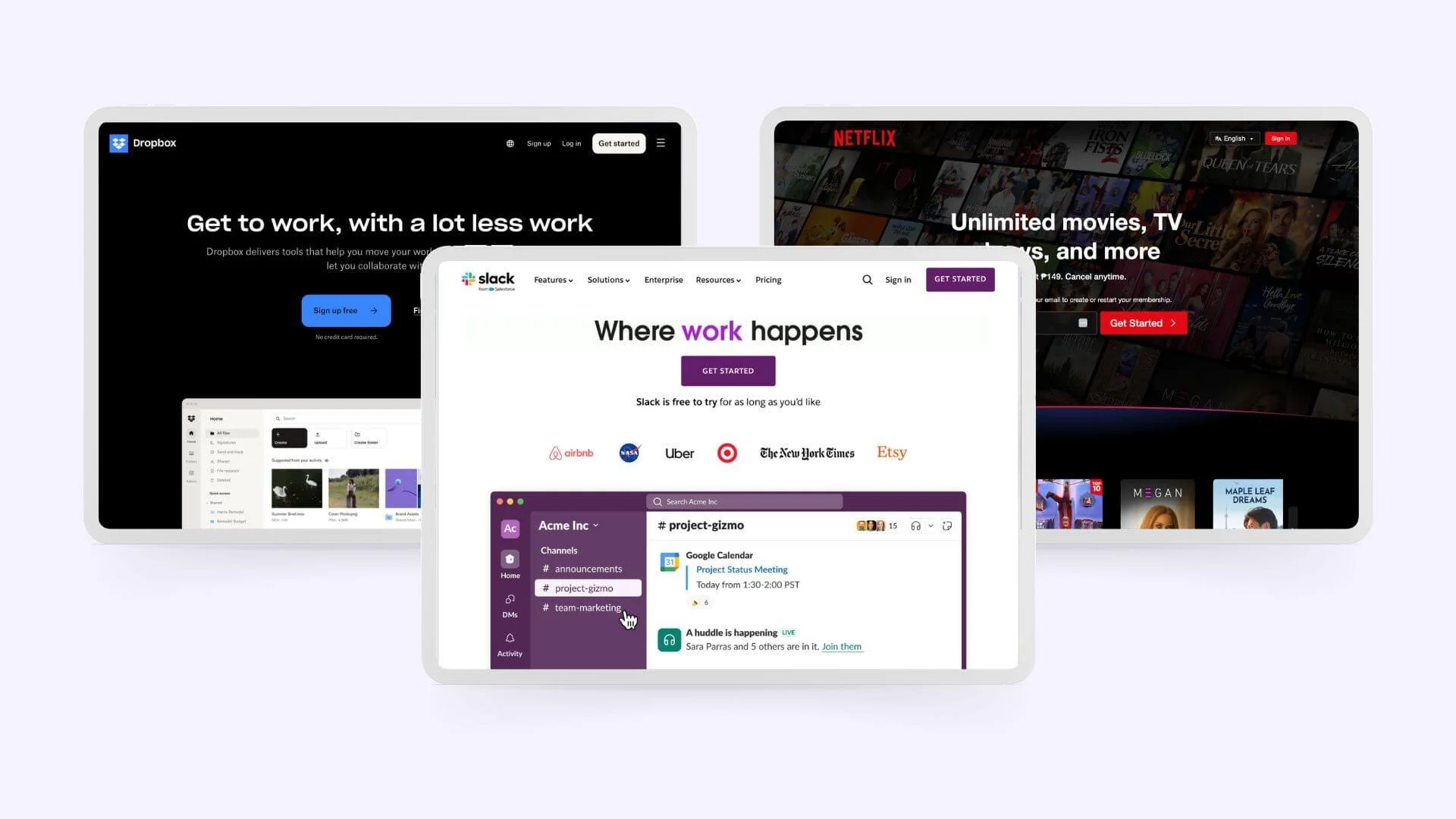Too much product optimisation: recognising the hidden costs of over-optimising for efficiency
In SaaS, the pursuit of efficiency feels almost second nature. Streamlined workflows, optimised processes, and quick-to-market features are often heralded as signs of success. As we often say, simplification is essential for enhancing user experience. However, an overemphasis on efficiency can lead to oversimplification, sacrificing valuable features that address diverse user needs.
This creates a paradox: as product managers and CPOs chase the allure of optimisation as a magic formula for scaling success, they risk alienating users and stifling innovation.
Is this relentless pursuit of efficiency is hiding something crucial? Beneath the surface lies a blind spot where over-optimisation can backfire.
It’s time to ask: are we optimising for the right reasons? Or are we trading user trust and engagement for short-term wins? Let’s explore the pitfalls of over-optimisation and how SaaS teams can achieve balance.
Why efficiency dominates product strategy
Efficiency has become a cornerstone of product strategy in the SaaS industry. As teams face pressure to scale rapidly, attract users, and outperform competitors, efficiency metrics often take precedence. The focus on product optimisation has become almost instinctive.
Here’s why product optimisation often becomes the focal point of strategy:
Cost savings: Streamlined workflows result in lower resource expenditure, which is essential for scaling operations without sacrificing profitability.
Speed to market: In a sector where competitors are only a click away, rapid iteration and deployment are vital for maintaining relevance.
Measurable impact: Metrics such as reduced page load times, increased task completion rates, and higher user adoption offer tangible evidence of success, which can be shared with internal stakeholders and investors.
This focus on efficiency can yield significant benefits in the short term. However, when pursued relentlessly, product optimisation may have unintended consequences that can hinder long-term success.
The efficiency trap
While the push for efficiency in product optimisation is well-intentioned, it can lead to several pitfalls:
Shallow metrics: Relying on KPIs like task completion time or feature adoption rates without considering the broader context can overlook the subtleties of user experience. These metrics may measure performance but fail to capture the true emotional response or engagement levels of users.
Over-simplification: In an effort to streamline processes and make products more efficient, design choices may become overly simplistic, leaving advanced users frustrated and disengaged. Product optimisation should not compromise the depth and richness that experienced users value.
Erosion of differentiation: Over-optimising often leads to a one-size-fits-all approach, stripping away the unique qualities that differentiate a product from its competitors in the market. Without distinctive features, a SaaS product risks becoming interchangeable with others in the industry.
Case in point: A widely-used SaaS platform decided to remove manual reporting capabilities due to low usage statistics. While the move reduced maintenance costs, it alienated enterprise clients who relied on the feature for complex reporting needs. This resulted in a significant surge in churn, proving the importance of maintaining features that cater to niche user segments.
The hidden costs of over-optimising
Over-optimisation can have long-term negative impacts that are not immediately visible. These hidden costs can significantly affect user experience and brand perception.
1. Trust erosion through deceptive UX tactics
Deceptive UX tactics, such as pre-selected subscription checkboxes or convoluted cancellation processes, might boost immediate conversions but can harm user trust in the long run. While these tactics may increase revenue in the short term, they can damage a brand’s reputation and alienate users over time.
For instance, platforms that intentionally make cancelling subscriptions difficult might retain users temporarily but risk creating lasting resentment. In the competitive world of SaaS, transparency and trust are essential to long-term user loyalty.
2. Loss of features users love
Not all features are created equal. Usage data may indicate that some features are underutilised, but that doesn't always mean they should be discarded. Features with lower adoption rates may still provide immense value to specific user segments. For example:
Granular controls: Removing advanced settings in favour of a simpler interface can alienate power users who rely on customisation to streamline their workflows.
Legacy features: Removing older features that have a smaller user base can disrupt long-time customers who have tailored their workflows around those tools.
To prevent this, product teams should employ qualitative research methods, such as user interviews or in-depth usability studies, to understand what users value. This ensures product optimisation efforts are informed by a complete picture of user needs.
3. Innovation takes a backseat
Over-optimisation often creates an environment where only low-risk, incremental changes are prioritised. While this approach ensures stability, it stifles innovation. When teams focus solely on efficiency, they may miss opportunities for transformative change. SaaS companies that avoid experimentation in favour of safer, more efficient paths may eventually be overtaken by competitors willing to take bigger risks.
Example: A SaaS company that continually refines its UI for speed and simplicity may miss the chance to introduce bold, AI-powered features that could redefine its market. The competitor that does take that risk may be able to set new industry standards and capture a significant portion of the market.
4. Misleading metrics
While data-driven decision-making is vital, it’s crucial to interpret metrics with caution. Without context, metrics can mislead teams into making decisions that negatively affect the product. For example:
High engagement rates: A sudden spike in engagement might reflect confusion or frustration rather than user satisfaction.
Decline in support tickets: Fewer support tickets may indicate improved usability, or they could suggest users have become disengaged and stopped trying to solve their issues.
A more balanced approach is to pair quantitative metrics with qualitative insights. Tools like user interviews, heatmaps, and session recordings can provide the context needed to interpret data more accurately.
5. Loss of accessibility
In the quest for efficiency, SaaS teams may overlook crucial responsibilities such as accessibility and inclusivity. Neglecting the needs of diverse user groups can create barriers to usage, especially for those with disabilities. For instance:
Accessibility: Streamlining processes without considering the needs of users with disabilities can make products inaccessible to large segments of the user base.
Inclusivity: Over-simplification may alienate users who require customisable or nuanced workflows, reducing overall user satisfaction.
Product optimisation should take accessibility into account at every stage of the design process to ensure that products are usable by the broadest possible audience.
6. When efficiency costs you quality
Focusing too much on efficiency can lead to cutting corners, and before you know it, the product quality your users count on begins to slip. Over-optimising for cost savings often means sacrificing critical aspects of quality, leaving users disappointed and businesses struggling to recover.
The hidden cost of quality: Skimping on quality assurance might save money initially, but it often leads to higher expenses later due to returns, customer support issues, and damage to reputation.
Defects erode trust: When products fail to meet expectations, users feel let down. That can lead to churn, bad reviews, and a hit to your market share -all things no company can afford.
7. Burnout through efficiency
Efficiency goals shouldn’t come at the expense of the people behind the product. Pushing teams too hard to hit ever-tighter deadlines can lead to burnout, creating a toxic cycle of stress, turnover, and lost productivity.
The toll on well-being: Constant pressure to optimise can lead to health issues like anxiety and burnout, leaving employees less engaged and less productive.
Retention challenges: When employees feel overworked and undervalued, turnover rises. And with it comes increased recruitment and onboarding costs -not to mention the loss of valuable expertise.
Navigating stakeholder pressures: efficiency without sacrifices
Stakeholders are naturally focused on business outcomes -cost reduction, improved ROI, and hitting KPIs. Product managers, CPOs, and CTOs are often tasked with meeting these demands, which can create tension between efficiency goals and user satisfaction.
Balancing stakeholder demands
One of the key challenges for product managers is balancing stakeholder pressure with user needs. While efficiency metrics are often seen as indicators of success, they should not come at the expense of user experience.
Strategies to balance these pressures include:
Proactive communication: Educate stakeholders on the long-term value of a user-centric approach to design. While short-term gains from efficiency may look appealing, focusing on user engagement and satisfaction can lead to more sustainable success.
Presenting data differently: Instead of only presenting efficiency metrics, supplement them with qualitative insights. For example, include NPS scores or user feedback to provide a more complete picture of product performance.
Establishing guardrails
To prevent falling into the over-optimisation trap, it’s helpful to establish guardrails that protect both product quality and user experience. These might include:
Avoiding deceptive UX: Transparent user interfaces that clearly communicate terms and options are essential for maintaining trust.
Regular evaluation: Continuously evaluate product decisions against the company’s core values and mission to ensure that user needs are prioritised.
Balancing efficiency and user delight
Finding a balance between business needs and user satisfaction is at the heart of successful product optimisation. By focusing on both efficiency and user delight, SaaS teams can create products that drive long-term growth and user loyalty.
1. Focus on holistic metrics
Rather than solely tracking efficiency metrics, consider a broader set of KPIs that capture user engagement, retention, and satisfaction. Metrics like NPS and retention rates provide valuable insights into how well users are connecting with the product.
2. Build for flexibility
While simplifying the product is important, offering flexibility can be a significant differentiator. Consider providing users with options to customise their experience, such as:
Customisation: Let users modify interfaces or workflows to suit their needs.
Dual Features: Provide both manual and automated options to cater to different types of users.
3. Human-centred design
Efficiency shouldn’t come at the cost of empathy. Prioritising user experience design elements such as intuitive onboarding or robust help resources can make a significant difference in user retention.
Example: Platforms that invest in user-friendly onboarding processes typically see better long-term retention rates because new users feel supported and confident in using the product.
Strategic steps to avoid over-optimisation
To avoid the pitfalls of over-optimisation, SaaS teams should adopt a more strategic approach to product optimisation. Here are some key steps to follow:
1. Employ multi-layered analysis
Integrate both quantitative and qualitative insights to make more informed product decisions. Use user interviews, heatmaps, and churn analysis to understand user behaviour in depth and uncover any potential gaps.
2. Test gradually
Instead of making sweeping changes all at once, consider conducting A/B testing to validate assumptions and measure the impact of smaller changes. This approach helps mitigate risks while allowing teams to make data-driven decisions.
3. Post-implementation reviews
After implementing product optimisations, conduct regular reviews to assess whether the changes have delivered the intended outcomes. Engage cross-functional teams to gather insights and adjust accordingly.
Examples of SaaS companies that found balance
1. Netflix: controlled experimentation
Netflix’s A/B testing approach allows for continuous optimisation without sacrificing user satisfaction. By incrementally tweaking algorithms, Netflix ensures that users maintain control over their experience while the platform improves.
2. Slack: flexibility as a feature
Slack has resisted oversimplification by recognising that its user base values granular customisation. Its flexibility in notification settings and integrations strengthens user loyalty by catering to diverse user needs.
3. Dropbox: simplicity meets power
Dropbox strikes a balance between simplicity and functionality. Its clean interface is easy for casual users, but it also offers powerful collaboration tools that appeal to more advanced users, showcasing the company’s ability to optimise for different user types.
Efficiency is critical in SaaS, but it shouldn’t come at the expense of user trust, innovation, or differentiation. By adopting a user-first approach, SaaS teams can achieve sustainable growth without falling into the efficiency trap.
The real challenge lies in finding that balance -between scaling operations and retaining the human touch that makes your product resonate. And when that balance is struck? That’s when efficiency truly shines.
At Digital Product People, we specialise in balancing efficiency with user satisfaction to ensure your SaaS product thrives. Our expertise helps businesses avoid the pitfalls of over-optimisation while driving meaningful user engagement. Reach out today to discover how we can help your product succeed without compromising the human touch.




